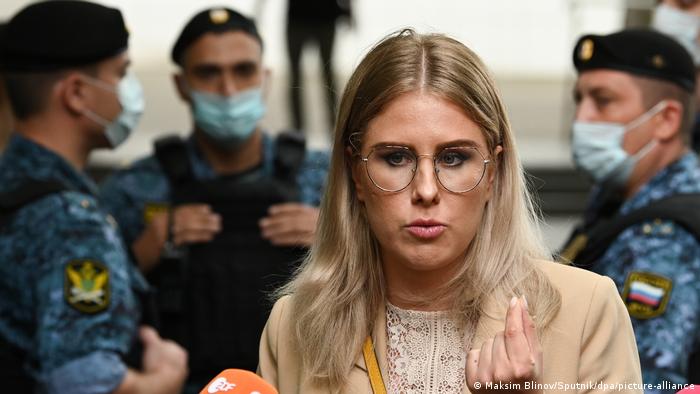UPDATED
Canadian Bruce (Xiaoyu) Liu wins prestigious Chopin piano competition
Previous winners of the Chopin Competition include some of the greatest names in classical music
Wojtek RADWANSKI AFP
Issued on: 21/10/2021
Warsaw (AFP)
"Being able to play Chopin in Warsaw is one of the best things you can imagine," 24-year-old Bruce Liu said as the jury announced their decision at the Warsaw Philharmonic Concert Hall.
Previous winners of the Chopin Competition include some of the greatest names in classical music, such as Maurizio Pollini, Martha Argerich and Krystian Zimerman.
Held every five years since 1927, the Chopin competition would normally have been held last year, but was postponed because of the coronavirus pandemic -- a first since World War II.
"It was challenging to get all the competitors into Poland," Artur Szklener, director of the National Institute of Frederic Chopin, which organises the competition, had told AFP.
But one of the 17 jury members, Argentinian concert pianist Nelson Goerner, said that pandemic-related lockdowns helped raise the standard of this year's competition.
"The level this year is remarkable," Goerner told AFP earlier in the competition.
"The pianists have had more time to prepare and I think the pandemic has awakened in all of us a desire to go further, to surpass ourselves," he said.
"You can hear it in how these young pianists are playing."
Japan's Kyohei Sorita, 27, came joint-second with 26-year-old Italian-Slovenian Alexander Gadjiev.
Spain's Martin Garcia Garcia, 24, came third.
Issued on: 21/10/2021
Warsaw (AFP)
"Being able to play Chopin in Warsaw is one of the best things you can imagine," 24-year-old Bruce Liu said as the jury announced their decision at the Warsaw Philharmonic Concert Hall.
Previous winners of the Chopin Competition include some of the greatest names in classical music, such as Maurizio Pollini, Martha Argerich and Krystian Zimerman.
Held every five years since 1927, the Chopin competition would normally have been held last year, but was postponed because of the coronavirus pandemic -- a first since World War II.
"It was challenging to get all the competitors into Poland," Artur Szklener, director of the National Institute of Frederic Chopin, which organises the competition, had told AFP.
But one of the 17 jury members, Argentinian concert pianist Nelson Goerner, said that pandemic-related lockdowns helped raise the standard of this year's competition.
"The level this year is remarkable," Goerner told AFP earlier in the competition.
"The pianists have had more time to prepare and I think the pandemic has awakened in all of us a desire to go further, to surpass ourselves," he said.
"You can hear it in how these young pianists are playing."
Japan's Kyohei Sorita, 27, came joint-second with 26-year-old Italian-Slovenian Alexander Gadjiev.
Spain's Martin Garcia Garcia, 24, came third.
'Sleep and party'
Born in Paris, Liu graduated from Montreal Conservatoire.
He has performed with the Israeli Philharmonic Orchestra and the Montreal Symphony Orchestra and has been on two tours in China.
"The pandemic actually made this kind of meeting for me more special," Liu said after his victory.
Liu said he had to be "really careful all the time" during the coronavirus crisis, so as to be able to keep up his competition and concert schedule, and as a result had "not met many people" in the past two years.
He also said he hoped the competition would be "just a start" in his musical journey.
"It's hard to keep the freshness, to continuously find new ideas so I hope this is not the last point," he told reporters.
He added that he was looking forward "to be finally able to sleep and party".
This year's event drew 87 pianists from across the globe, including 22 from China, 16 from Poland and 14 from Japan.
Broadcast live on YouTube and via a bespoke mobile app, the contest attracted record online interest.
Some 70,000 people watched the result streamed online.
© 2021 AFP
BRUCE (XIAOYU) LIU – final round (18th Chopin Competition, Warsaw)
Canadian wins 18th Chopin international piano competition
By MONIKA SCISLOWSKA

1 of 6
By MONIKA SCISLOWSKA

1 of 6
Pianist Bruce (Xiaoyu) Liu of Canada reacts after being named as the winner of the 40,000-euro ($45,000) first prize in the 18th Frederic Chopin international piano competition, a prestigious event that launches pianists’ world careers. Almost 90 pianists from around the globe took part in the 18th edition of the competition that was postponed from 2020 due to the pandemic. (AP Photo/Czarek Sokolowski)
WARSAW, Poland (AP) — Bruce (Xiaoyu) Liu of Canada was named early Thursday as the winner of the 40,000-euro ($45,000) first prize in the 18th Frederic Chopin international piano competition, a prestigious event that launches pianists’ world careers.
The announcement from the jury came just hours after Liu played as the last entrant among the 12 finalists, performing Chopin’s concerto in E minor, opus 11 with the orchestra at the packed National Philharmonic in Warsaw. His inspired performance was met with huge applause.
“Oh my god. I don’t know what to say, honestly,” Liu said after being name winner.
“We have been dreaming with all these people here for this prestigious stage,” the 24-year-old born in Paris said in English.
“Being able to play Chopin in Warsaw is one of the best things you can imagine, of course, so I’m truly honored for this award, of course, and for this jury’s trust and for all the warmth I have received in recent days,” Liu said.
The second prize and 30,000 euros ($35,000) went jointly to Alexander Gadjiev, representing Italy and Slovenia, and Kyohei Sorita of Japan. Gadjiev also won Krystian Zimerman’s prize of 10,000 euros ($11,800) for the best sonata performance.
The third prize of 20,000 euros ($23,000) was awarded to Martin Garcia Garcia of Spain, who also won the 5,000 euros ($5,800) prize for best concerto performance.
The fourth prize and 15,000 euros ($17,000) was shared by Aimi Kobayashi of Japan and Poland’s Jakub Kuszlik, who also won best mazurka performance prize and 5,000 euros. Italy’s Leonora Armellini was awarded the fifth prize of 10,000 euros ($11,600), while the sixth prize and 7,000 euros ($8,000) went to Canada’s J.J. Jun Li Bui.
The first prize was funded by the office of Poland’s president, and other prizes were funded by the government, state culture institutions and by private individuals.
High ranking in the renowned competition opens the world’s top concert halls to the pianists and paves the way to recordings with best known record companies.
Jury head Katarzyna Popowa-Zydron said after the announcement that the level of the pianists was very high and made the award decisions very hard for the 17 jurors. She called the participants “wonderful young people.”
During the competition, she had said that apart from being excellent pianists, the participants should also show sensitivity and bring freshness to the music.
“I try to look for a rapport between the performer and Chopin,” Popowa-Zydron said in an interview. Music is a “message from a person, and (the musicians) should know what kind of person Chopin was.”
Bowing to their artistry, the jury allowed two more finalists this year than usual. The competition, held every five years, was postponed from 2020 due to the pandemic.
Among previous winners are Maurizio Pollini of Italy, Argentina’s Martha Argerich, Garrick Ohlsson from the United States, Poland’s Krystian Zimerman and Artur Blechacz, and Seong-Jin Cho of South Korea.
Chopin, Poland’s best known and beloved classical music composer and pianist, was born in 1810 in Zelazowa Wola near Warsaw to a Polish mother and a French father. He left Poland at 19 to broaden his musical education in Vienna and then in Paris, where he settled, composing, giving concerts and teaching the piano. He died on Oct. 17, 1849, in Paris and is buried at the Pere Lachaise cemetery. His heart is at the Holy Cross Church in Warsaw.
WARSAW, Poland (AP) — Bruce (Xiaoyu) Liu of Canada was named early Thursday as the winner of the 40,000-euro ($45,000) first prize in the 18th Frederic Chopin international piano competition, a prestigious event that launches pianists’ world careers.
The announcement from the jury came just hours after Liu played as the last entrant among the 12 finalists, performing Chopin’s concerto in E minor, opus 11 with the orchestra at the packed National Philharmonic in Warsaw. His inspired performance was met with huge applause.
“Oh my god. I don’t know what to say, honestly,” Liu said after being name winner.
“We have been dreaming with all these people here for this prestigious stage,” the 24-year-old born in Paris said in English.
“Being able to play Chopin in Warsaw is one of the best things you can imagine, of course, so I’m truly honored for this award, of course, and for this jury’s trust and for all the warmth I have received in recent days,” Liu said.
The second prize and 30,000 euros ($35,000) went jointly to Alexander Gadjiev, representing Italy and Slovenia, and Kyohei Sorita of Japan. Gadjiev also won Krystian Zimerman’s prize of 10,000 euros ($11,800) for the best sonata performance.
The third prize of 20,000 euros ($23,000) was awarded to Martin Garcia Garcia of Spain, who also won the 5,000 euros ($5,800) prize for best concerto performance.
The fourth prize and 15,000 euros ($17,000) was shared by Aimi Kobayashi of Japan and Poland’s Jakub Kuszlik, who also won best mazurka performance prize and 5,000 euros. Italy’s Leonora Armellini was awarded the fifth prize of 10,000 euros ($11,600), while the sixth prize and 7,000 euros ($8,000) went to Canada’s J.J. Jun Li Bui.
The first prize was funded by the office of Poland’s president, and other prizes were funded by the government, state culture institutions and by private individuals.
High ranking in the renowned competition opens the world’s top concert halls to the pianists and paves the way to recordings with best known record companies.
Jury head Katarzyna Popowa-Zydron said after the announcement that the level of the pianists was very high and made the award decisions very hard for the 17 jurors. She called the participants “wonderful young people.”
During the competition, she had said that apart from being excellent pianists, the participants should also show sensitivity and bring freshness to the music.
“I try to look for a rapport between the performer and Chopin,” Popowa-Zydron said in an interview. Music is a “message from a person, and (the musicians) should know what kind of person Chopin was.”
Bowing to their artistry, the jury allowed two more finalists this year than usual. The competition, held every five years, was postponed from 2020 due to the pandemic.
Among previous winners are Maurizio Pollini of Italy, Argentina’s Martha Argerich, Garrick Ohlsson from the United States, Poland’s Krystian Zimerman and Artur Blechacz, and Seong-Jin Cho of South Korea.
Chopin, Poland’s best known and beloved classical music composer and pianist, was born in 1810 in Zelazowa Wola near Warsaw to a Polish mother and a French father. He left Poland at 19 to broaden his musical education in Vienna and then in Paris, where he settled, composing, giving concerts and teaching the piano. He died on Oct. 17, 1849, in Paris and is buried at the Pere Lachaise cemetery. His heart is at the Holy Cross Church in Warsaw.

















